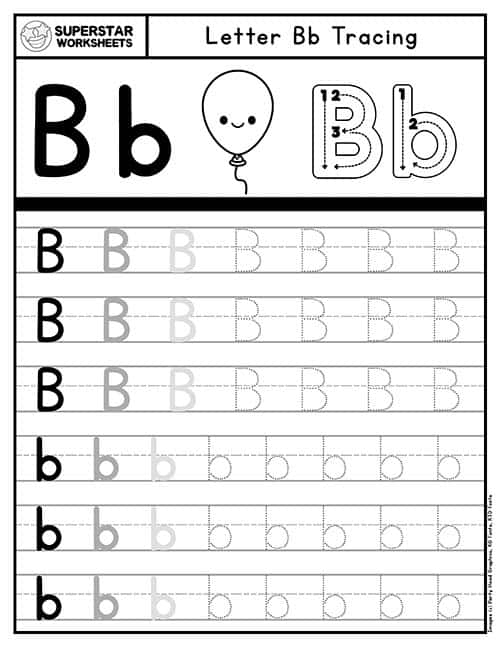Learning the alphabet is a fundamental skill for kindergarten students. One of the first letters they typically learn is the letter “Bb.” To help reinforce this letter and its sound, teachers often use worksheets specifically designed for practicing writing and identifying the letter Bb.
These worksheets are not only educational but also fun for young learners. They usually feature activities such as tracing the letter, coloring pictures that start with the letter Bb, and finding and circling instances of the letter in a word search. This hands-on approach helps children engage with the material and solidify their understanding of the letter.
One common exercise on a letter Bb worksheet is to have students trace both uppercase and lowercase versions of the letter. This helps them become familiar with the shape and structure of the letter while also practicing their fine motor skills. Additionally, students may be asked to identify and color pictures of objects that start with the letter Bb, such as a ball, bear, or banana.
Another activity that is often included on these worksheets is a word search. Students are given a grid of letters and tasked with finding and circling all instances of the letter Bb. This not only reinforces their ability to recognize the letter in different contexts but also helps improve their visual scanning and attention to detail.
Overall, letter Bb worksheets are a valuable tool for kindergarten teachers to use in their classrooms. By incorporating fun and interactive activities, these worksheets help students develop their literacy skills while also making learning enjoyable. Whether used as part of a lesson or as homework practice, letter Bb worksheets are a great resource for reinforcing the importance of the alphabet in early childhood education.
In conclusion, letter Bb worksheets play a crucial role in helping kindergarten students learn and internalize the letter Bb. By providing engaging activities that encourage practice and repetition, these worksheets support young learners in developing their foundational literacy skills. With the right resources and guidance, children can confidently master the alphabet and set a strong foundation for their future academic success.
